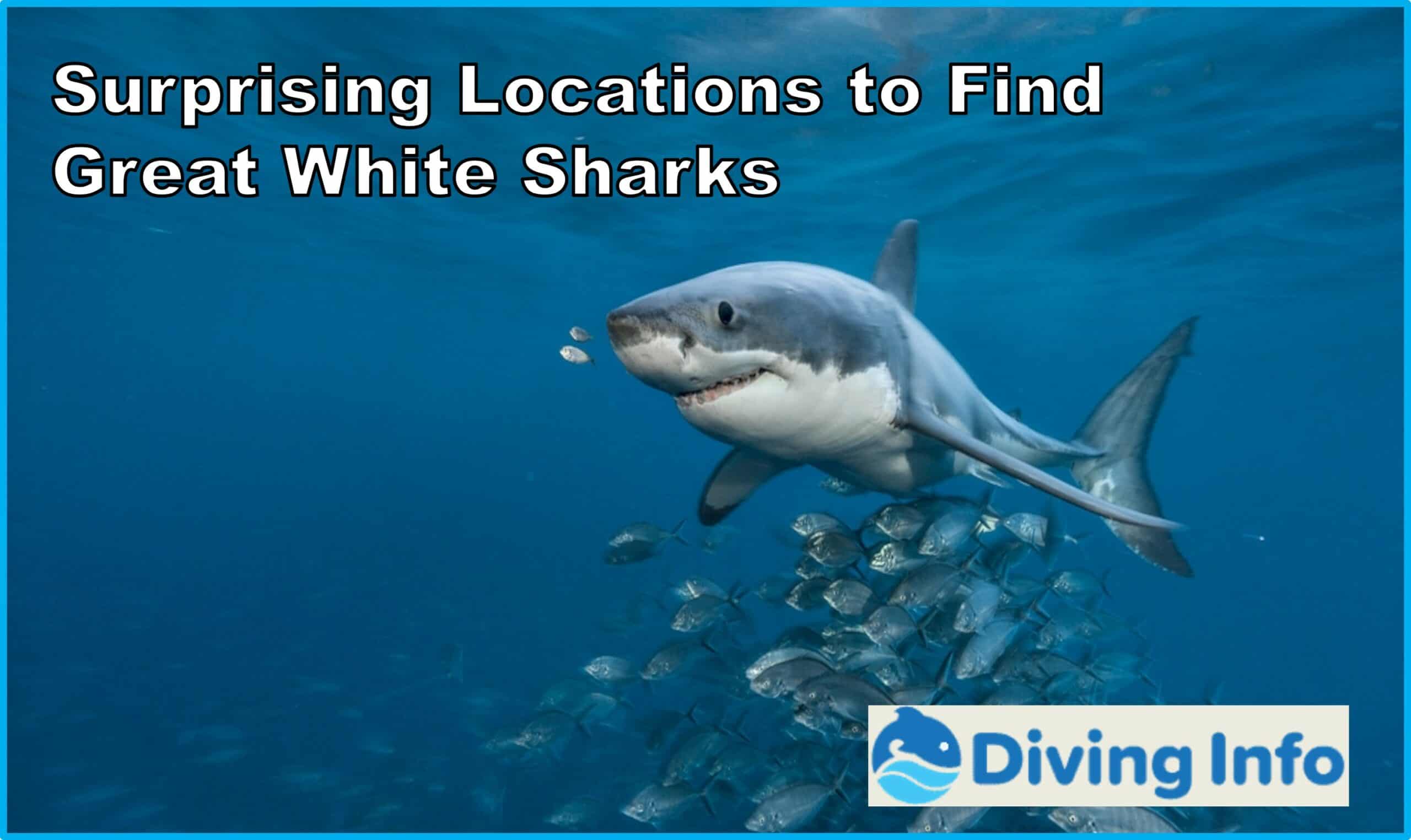*This post may contain affiliate links. As an Amazon Associate we earn from qualifying purchases.
Are you a shark enthusiast looking to expand your knowledge of great white sharks? While you may be familiar with their typical habitats, such as Dyer Island and Neptune Island, there are also some surprising locations where you can find these apex predators. In this article, we will explore some lesser-known spots where you can encounter great white sharks and provide information on where to cage dive or snorkel with them.
Before we dive into these locations, it’s important to understand the habits and characteristics of great white sharks. These predators can grow up to 20 feet in length and weigh over 5,000 pounds, making them one of the largest predatory fish in the world. They are known for their iconic dorsal fin and sharp, serrated teeth.
Great white sharks are apex predators, meaning they sit at the top of the food chain and have no natural predators. They are opportunistic feeders and will eat a variety of prey, including seals, sea turtles, and fish. With their impressive size, speed, and strength, encountering a great white shark can be a thrilling and awe-inspiring experience.
You may be interested in my other articles about Are there great white sharks in Long Island Sound or Are there great white sharks in Boston.
Shark Habits and Characteristics
You may be surprised to learn that despite their large size and high metabolism, great white sharks prefer to inhabit coastal and offshore waters with sea water temperatures between 12-24°C, where they can feast on high-calorie prey to maintain their energy levels. They’re known for their impressive feeding habits, requiring a high calorie intake due to their size and metabolism.
Great white sharks can consume up to 90 pounds of food in a single meal, and their diet consists mainly of fish, sea lions, seals, and even other sharks. Get a closer look at shark feeding habits.
The population dynamics of great white sharks are still not fully understood, but they’re known to have a slow growth rate and a low reproductive rate. It’s estimated that female great white sharks give birth to only 2-10 pups every two to three years, making them vulnerable to overfishing and other threats.
In recent years, conservation efforts have been put in place to protect these magnificent creatures and their habitats, which are essential to maintaining the balance of the ocean’s ecosystem.
Explore the ethical considerations of cage diving in shark waters.
Common and Expected Locations
If you’re planning a shark diving trip, chances are you already know about some of the more common spots to find these majestic creatures. Dyer Island and False Bay in South Africa, Neptune Island in Australia, and California are all well-known areas to encounter great white sharks. These locations are popular for a reason – they offer ideal habitats for the sharks, including coastal and offshore waters with sea water temperatures between 12-24°C.
But beyond these expected locations, there are also surprising areas where great white sharks can be found. The North Caribbean, Tampa Bay in Florida, and even the Great Barrier Reef in Australia have all had shark sightings. And there’s also the possibility of encountering these sharks in Scottish and UK waters.
As you plan your trip, consider these unexpected spots and perhaps try something new. And while you’re out there, take time to discuss ideas like cage diving and conservation efforts to help protect these magnificent creatures.
Unexpected and Rare Sightings
Discovering unexpected habitats where these apex predators roam can broaden your understanding of their range and behaviors. For instance, the Sicilian channel near the island of Lampedusa or the Island of Mallorca in Spain’s Cabrera Archipelago National Park have both had rare sightings of great white sharks. These sightings suggest that great white sharks may be more adaptable than previously thought and can thrive in a wider range of environments.
However, these rare sightings also highlight the need for conservation efforts to protect the species and their habitats, especially in areas where they may not be expected. The rarity of these sightings can evoke a sense of excitement and wonder in readers, as they discover new and unexpected information about great white sharks.
The mention of conservation efforts emphasizes the importance of protecting these creatures, creating a sense of responsibility and awareness in the audience. The discussion of shark behavior can also pique readers’ interest and curiosity, encouraging them to learn more about these fascinating creatures and their role in the ecosystem.


